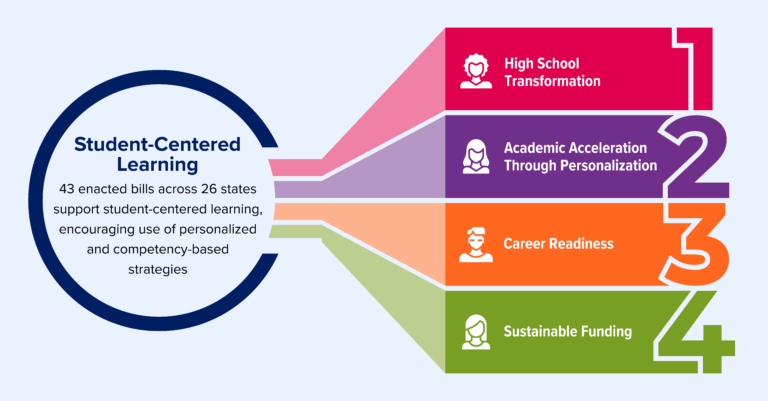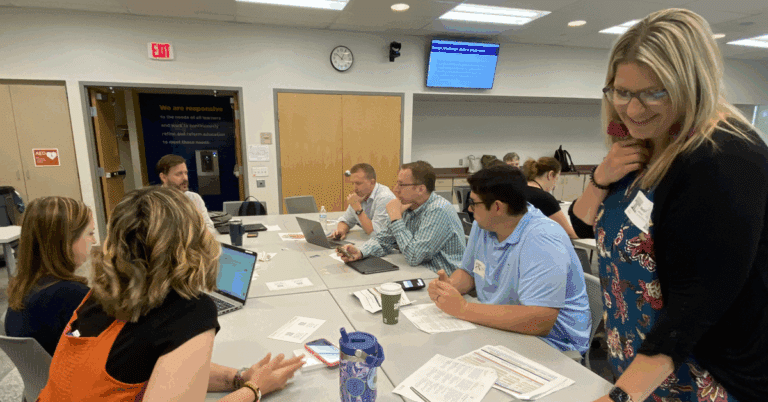Leaders from district cohorts in our partner states want to learn how to implement personalized, competency-based learning in different ways to see what works for their communities – whether that’s from expert leaders, other states’ cohorts or KnowledgeWorks.
KnowledgeWorks needed to know if we and our partners were on the right path and what we could do better. So we partnered with Research For Action to conduct a cross-state analysis of the implementation of personalized, competency-based learning. From State Commitment to District Implementation: Approaches and Strategies for Personalized, Competency-Based Learning documents and analyzes how personalized, competency-based learning is taking hold in these states and the initial cohort of school districts implementing the work.
Based on the data collection and the analysis presented in the report, here are five recommendations for district leaders in the field:
- Set clear goals for the work.
Just as clear goals are critical at the state level, they are also essential to district implementation. District respondents identified the lack of a shared set of short-term results and long-term impacts for the effort, as well as indicators to measure progress, as challenges in moving the work forward. District design teams should develop their goals for the work at the outset and revisit those goals regularly to determine their progress and continuously improve the work. - Develop district policy and practice that supports the work and removes barriers.
Study districts recognized that they needed to build systems in which personalized, competency-based learning could be implemented. District systems change in areas such as teacher evaluation is essential to ensure alignment between local policy and classroom instruction. - Allow time for teacher orientation and implementation.
Personalized, competency-based learning is an ambitious approach to education that changes the roles of both teachers and students in the classroom. That level of implementation reform requires time for teachers to prepare for instruction on a weekly basis, and over the long-term through ongoing professional development, implementation, and continuous improvement. - Provide opportunities for classroom observations and reflections.
Observations were consistently identified as an effective way to build teacher capacity, whether in the district or outside. Allowing for peer reflection afterwards is also essential to help teachers process what they saw and clarify what they learned and can take back to their own classroom. - Offer both human and material resources to provide ongoing support.
Teachers will not have all the capacity they need to implement personalized, competency-based learning after a single professional development session; this approach requires ongoing technical assistance. Some districts utilized instructional coaches to provide customized, district-based supports that were considered effective. At the same time, providing lesson plans and templates for instructional strategies that can be modified to fit individual classrooms were also identified as valuable resources.
Read the other recommendations for district leaders in the report.





